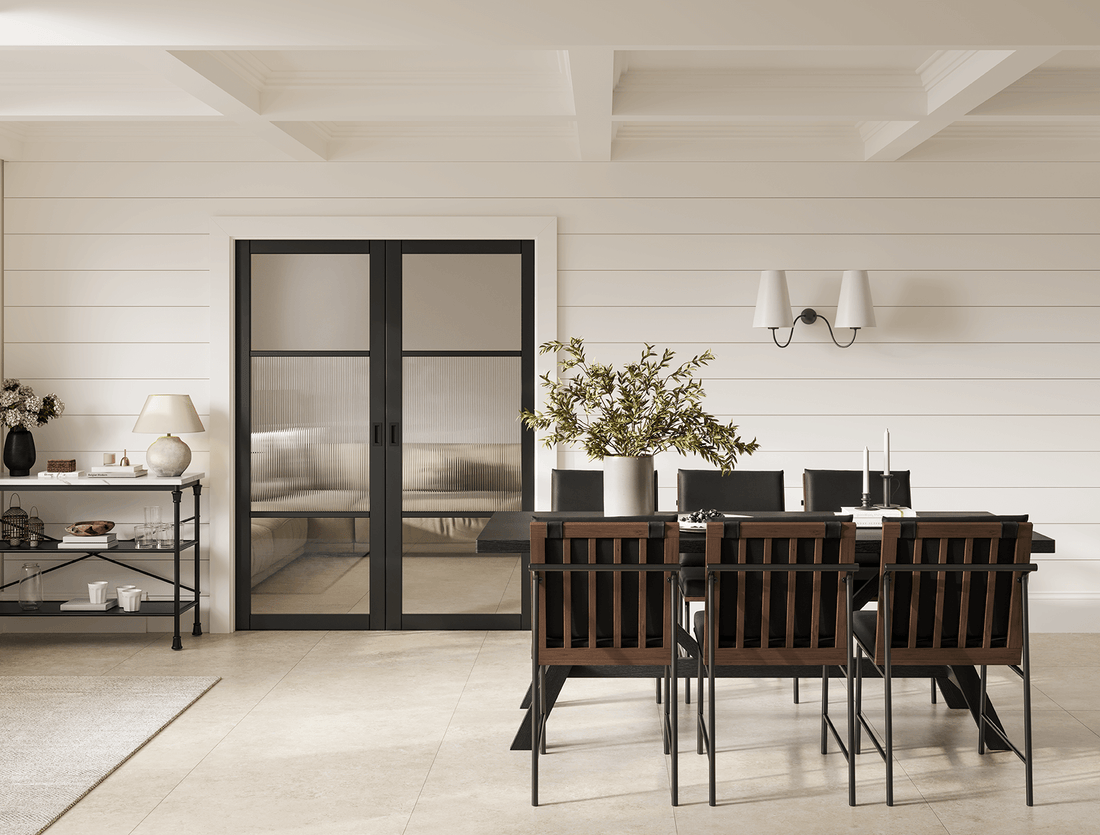
How to Choose a Door for an Unusual Opening
Samuel MorrisHow to Choose a Door for an Unusual Opening | Our Guide
When it comes to home renovation or new builds, not all doorways follow standard dimensions or placements. Maybe you’ve got an arched entry, an ultra-wide room divider, or a quirky cottage nook that refuses to play by the rules. Choosing a door for an unusual opening can feel daunting—but it doesn’t have to be.

In this guide, we’ll walk you through everything you need to consider when picking the right door for those awkward, oversized, undersized, or just plain unique spaces.
1. Start with the Opening: Measure Precisely
Before anything else, get accurate measurements of your opening. Standard UK internal doors typically measure 1981mm x 762mm (or similar), but unusual openings might be taller, narrower, shorter, or even curved.

Here’s what to measure:
- Height and width of the door opening (measure in multiple places)
- Depth of the wall or frame (for frame compatibility)
- Shape of the opening – is it arched, slanted, extra tall, or extra wide?
Tip: Always use a spirit level and a good tape measure. If the opening is especially irregular, a professional survey is worth considering.
2. Consider Bespoke Door Solutions
For most unusual openings, your best bet will be a bespoke door. Custom-made doors allow you to match exact measurements, materials, and design requirements.

Benefits of bespoke doors:
- Perfect fit – No need for unsightly fillers or large gaps.
- Design freedom – Choose your preferred style, glazing, finish, and hardware.
- Better function – Tailored doors often operate more smoothly in tricky spaces.
At Interior Doors Ltd, we offer bespoke sizing on many of our door ranges, including timber, steel, and glazed options—ideal for projects that need something a little outside the norm.
3. Match the Door Style to the Space
Unusual openings often call for creative door styles. Here are a few options that work beautifully:
Bi-fold Doors
Perfect for wide spaces or areas with limited swing room, like under stairs or small utility rooms.

Sliding or Pocket Doors
Excellent for awkward corners, tight spaces, or modern interiors. Pocket doors slide into the wall, completely disappearing when open.

French or Pair Doors
Great for wide openings—think dining room to conservatory or large living spaces.

Stable Doors
Suited for quirky cottages or rustic kitchens. These split in half, so you can open the top and bottom separately.

Arched or Curved Doors
Custom-built for character homes or period properties with rounded frames. Beautiful and statement-making.

4. Think About the Material
Your material choice affects more than just the look—it also determines durability, insulation, and fire resistance.
- Solid wood: Ideal for traditional or heritage-style openings.
- Engineered wood with veneer: Cost-effective and stable for most interiors.
- Glass or glazed: Opens up light in darker or awkwardly shaped rooms.
- Steel-framed: Great for industrial or contemporary spaces, especially where structural reinforcement is needed.

For odd-sized openings, engineered and veneered doors are often easier to modify without compromising structure.
5. Decide on the Door Swing and Opening Style
This is especially important in tight or unconventional spaces. Ask yourself:
- Should it swing inward or outward?
- Should it be left-handed or right-handed?
- Does a pivot, sliding, or folding mechanism suit better?

For small or oddly shaped rooms, pocket or sliding doors are often more functional than traditional swinging ones.
6. Work with Skilled Joiners or Installers
When dealing with non-standard sizes or shapes, it’s smart to work with experienced professionals. A good joiner can help:
- Adjust the frame or lining to accommodate the door
- Ensure structural integrity
- Install bespoke or oversized doors properly

Many bespoke doors from reputable suppliers (like ours!) can also be pre-hung in custom frames, which makes installation far easier.
7. Fire Safety Considerations
If the unusual opening is in a location that requires a fire-rated door—such as between a kitchen and staircase or in a loft conversion—you’ll need a custom FD30 or FD60 fire door. These can be made bespoke, too.

Make sure you get certification and compliance paperwork with any bespoke fire door.
8. Don’t Forget the Finishing Touches
Even an oddly sized or shaped door can look completely seamless when the finishing details are right. Think about:
- Matching architraves or trimming to the surrounding décor
- Flush handles or low-profile hardware for tight spaces
- Paint or stain colours that help the door blend—or stand out

If your door is a statement piece (like a steel-framed or arched design), you might want to highlight it. For others, subtle finishes help integrate the door smoothly into your room.
9. Visit a Showroom If You Can
If you're unsure what might work, or just want to see unusual door styles in person, visiting a showroom is a smart move. At Interior Doors Ltd, we welcome homeowners, architects, and designers to our Berkshire showroom to explore bespoke doors and discuss projects. It’s the best way to see materials and designs up close before committing.

10. Final Tips: Think Long-Term
When choosing a door for an unusual opening, think about how it will serve your space over time. Will the layout stay the same? Will furniture need to pass through it? Is it likely to warp or shift due to humidity or age?

Spending a little more time and budget on a quality, tailored solution now can save you a lot of hassle down the line.
Ready to Find the Right Door for Your Unusual Space?
At Interior Doors Ltd, we specialise in helping customers find (or create) the perfect doors for even the most challenging spaces. Whether you need a tall oak door, an arched steel frame, or a space-saving pocket system, we’re here to help.
Explore our bespoke door options online or visit our showroom in Berkshire—we’ll make sure your door is anything but ordinary.
